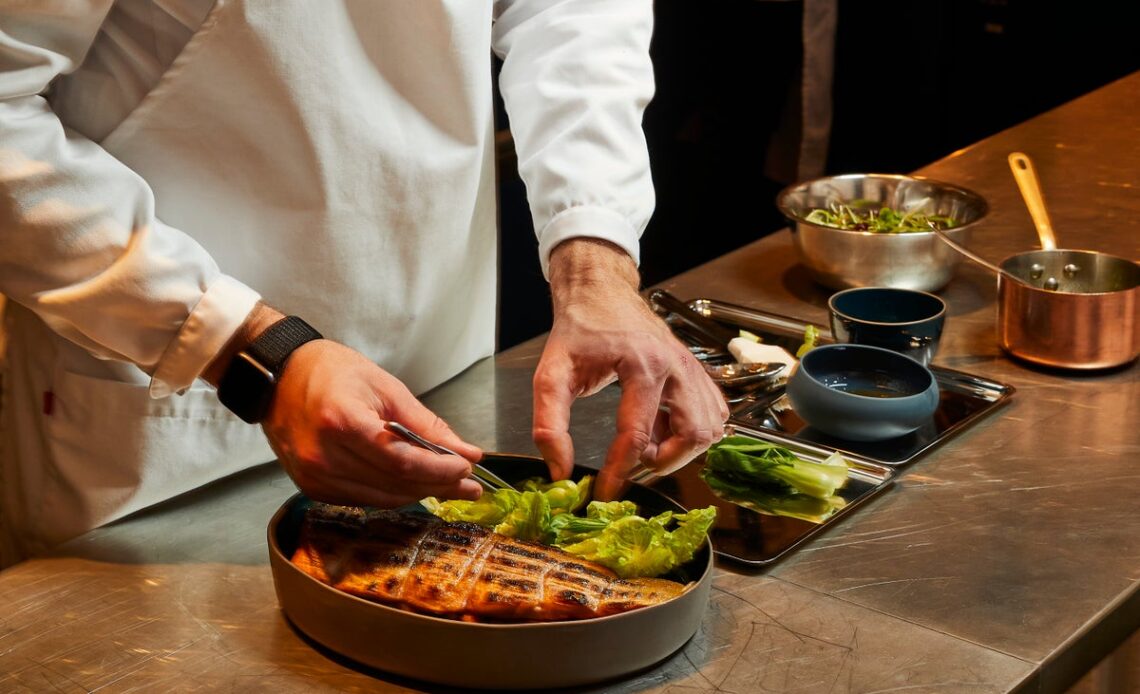What comes to mind when you hear ‘Iceland’? Glaciers. Volcanoes. The Blue Lagoon. A craggy, rugged landscape lit up by Northern Lights, punctuated by waterfalls and steaming pools. The island’s natural beauty is renowned the world over.
But Nordic food, on the other hand, doesn’t have the best reputation. If you’ve watched any travel show that visits Iceland, you’re likely to have seen the host grimacing over hákarl, the national dish of fermented Greenland shark. So notorious is this delicacy that the late Anthony Bourdain declared it to be one of the most disgusting things he had ever tasted; more recently, Jessica Hynes described it as a “jelly cube of ammonia” while Richard Ayoade spat his portion of hákarl out after a few chews in a 2016 episode of Travel Man.
Aside from the cured shark meat, other Icelandic dishes tourists tend to curl their toes at include svið, half a sheep’s head cross-sectioned, boiled and served with mashed potatoes; and harðfiskur, fish that is so dried out it appears almost mummified. Preservation is an important part of the country’s flavours, which means many traditional foods are smoked, salted, cured, dried, and fermented.
Modern day Iceland, however, is very different. Located only a few degrees south of the Arctic Circle, the harsh climate previously meant that locals depended heavily on subsistence farming. Now, with imports, migration, tourism, and ever-improving agricultural technologies, the capital’s food scene is full of excitement, fresh flavours and techniques, and a burgeoning sense of pride.
The culinary talent in Reykjavik started seeing exponential growth some 20 years ago, which was around the time that accomplished chef Siggi Hall first launched the Food and Fun Festival. This week-long festival sees chefs from all over the world take over restaurants and create dishes that take inspiration from their own cultures and experiences through Icelandic produce.
Read more on foodie travel:
In the succeeding years, Iceland’s restaurant scene has exploded, particularly in the fine dining arena. In 2017 the country gained its very first Michelin star in DILL under chef Gunnar Karl Gíslason’s stewardship, and has since been credited for paving the way for the rebranding of Icelandic cuisine. Since then, the country has collected three Michelin stars and has four more restaurants recommended in the Michelin Guide,…
Click Here to Read the Full Original Article at The Independent Travel…
